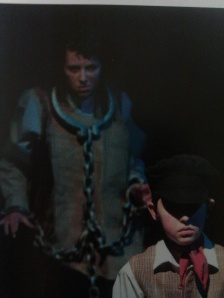I recently became aware of the relatively new genre of literature classed as New Adult. Some research suggests that books in this genre are accessible to readers of the age range 14 to 35 because the plot involves characters who are dealing with issues that transcend from teenage lifestyle into adult situations. Often, these main characters are over eighteen. The Guardian and NA-Alley might explain it better. NovelDay reacted to finding out about NA genre the same as I did.

I’ve recently been reading (and loving!) Dickens’ classic A Tale of Two Cities. I definitely have felt a connection with the main characters, though Dickens’ can fall into misunderstand-able purple prose occasionally.
As I have been reading, the school librarian keeps coming to me and asking, “Alex, how are you getting on with the book?” because she, too, is reading it. In fact, the book-club she attends are. Two very different people are finding the same interest in the same book. Let us imagine, for a moment, that A Tale really does fit into the NA genre. It ticks most of the criteria (I’d like to see if there is an actual criteria list – if so, do tell me) that I have imagined. Characters grow up, have a family, witness a revolution…
Dickens writes through changing times, and this is the essential backdrop of what I understand NA genre to be.

There might be another reason why Dickens’ novels inspire every age: they’re classics. One of the truly Dickensian masters of the pen is the way he is able to weave a handful of genres into one plot without seeming convoluted. For example, Great Expectations is essentially a bildungsroman, as Pip grows up into his world. Then there’s the love interest Estella and the rival, Drummel, which leads to an emerging triangle (as cliché as one might say it is to have two men fighting over a woman). This is underset by various mysteries, such as: who is Pip’s mysterious benefactor? Who left Miss Havisham at the altar? Who killed Pip’s sister? In the end, however, Dickens ties all these ‘loose ends’ (if we really can call them that) up to prove that they were essential to the plot right from the very beginning. He manages, by slight of pen, to trick the reading into thinking they were extraneous, but once one finishes the book, one is bound to nod and say:
“That makes perfect sense.”

These stories are classics because everyone can enjoy them, because they have a touch of everything, whilst being a whole story throughout.
And we have seen this especially at the time of his Bicentenary. Just look at the Great Expectations buzz that’s around at the moment, with a TV mini series and a movie. For me, there was an extra occasion, as I played Magwitch in my school’s play last year.

They did the same with Oliver Twist in 2008. I’m not a particular fan of Oliver, but that might be because I don’t like the layout of the musical.
Yet, these books do not get old, and each generation reads them with as much fervour as the last.
Still, they do possess certain qualities of New Adult plots: a character often progresses through marriage or work or passes a certain age when he can be called officially a man. The supporting cast are so varied that there is someone of every age, someone for any reader to relate to.
This begs the question: are the divisions between genres too advanced nowadays? So much so, perhaps, that writers are beginning to conform to a single genre? I’ve heard people say YA is not simply a ‘dumbing down’ of events for teenagers – and yet, there is still the existence of a ‘banned book list’ (the link is only one of many!). Essentially, what is Young Adult? I know two fourteen year olds with literary styles that make my kissing scenes blush! We are no less explorative than adult readers.